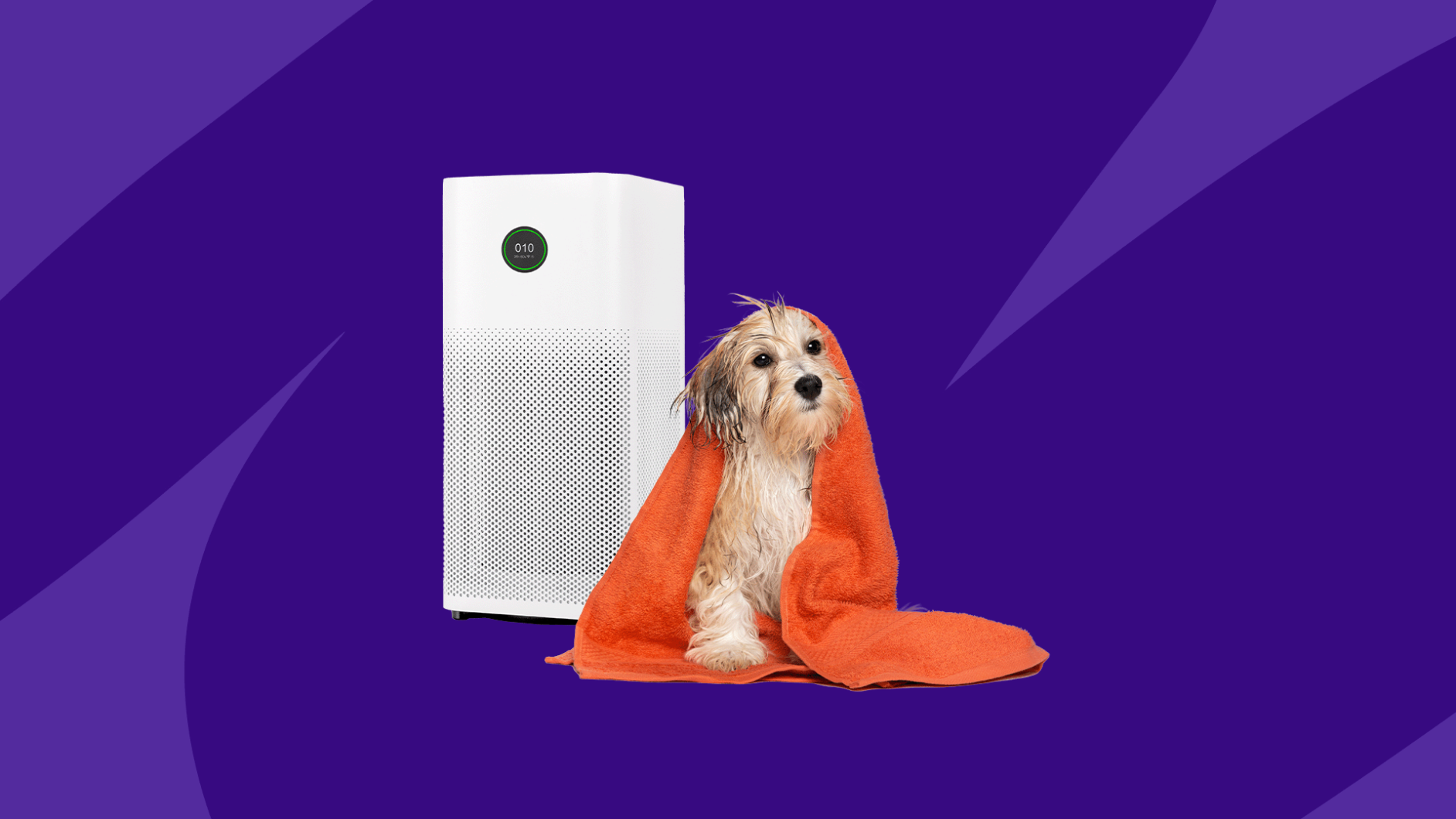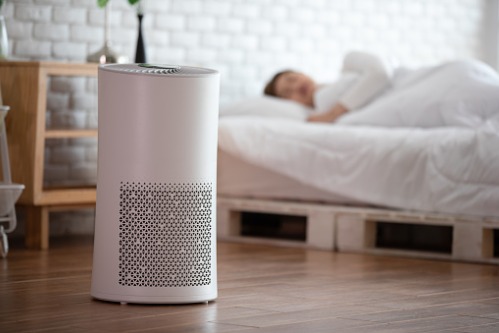Air purifiers can help reduce cockroach allergens in your home. They trap and remove particles from the air, making it cleaner.
Cockroach allergens can cause serious health issues. These tiny particles come from cockroach droppings, saliva, and body parts. They can trigger allergies and asthma. This is especially true for children and the elderly. Air purifiers can help. They filter the air, removing these harmful particles.
Using an air purifier can make your home a healthier place. It can reduce allergy symptoms and improve breathing. This blog will explain how air purifiers work and why they are effective against cockroach allergens. Let’s explore how you can breathe easier with the right air purifier.

Credit: www.singlecare.com
Introduction To Cockroach Allergens
Many people live with cockroaches in their homes. These pests can cause serious health issues. One major concern is cockroach allergens. These tiny particles can trigger allergies and asthma. Understanding these allergens can help you reduce their impact.
What Are Cockroach Allergens?
Cockroach allergens come from the bodies of cockroaches. They include saliva, feces, and shed body parts. These particles become part of the dust in your home. When inhaled, they can cause allergic reactions.
Health Risks Of Cockroach Allergens
Exposure to cockroach allergens can lead to many health problems. Common symptoms include sneezing, itching, and watery eyes. These allergens can also cause asthma attacks. Children are especially at risk. Long-term exposure can worsen their asthma.
People with weakened immune systems may experience more severe reactions. Reducing cockroach allergens can improve your health. It can also improve your quality of life.

Credit: neaai.com
Sources Of Cockroach Allergens
Cockroach allergens are harmful substances released by cockroaches. They come from the bodies, saliva, and droppings of cockroaches. These allergens are known to cause allergies and asthma, especially in children. Understanding the sources of these allergens is key to reducing their impact.
Common Household Areas
Cockroach allergens are commonly found in various areas of the home. These areas include kitchens, bathrooms, and basements. Cockroaches are attracted to food and moisture, making these places ideal for them. Crumbs, spills, and leaky pipes provide perfect conditions for cockroaches to thrive.
Other areas where cockroach allergens can accumulate include behind appliances, under sinks, and in cabinets. These hidden spots are often overlooked during cleaning. Regular and thorough cleaning of these areas can help reduce the presence of cockroach allergens.
Cockroach Behavior And Allergen Spread
Cockroaches are nocturnal creatures. They come out at night to search for food and water. Their movement during the night contributes to the spread of allergens. As they crawl over surfaces, they leave behind saliva, droppings, and body parts.
These allergens can then be spread through the air. Activities like sweeping or vacuuming can stir up these particles. This can lead to increased exposure to cockroach allergens. Using air purifiers can help capture these airborne particles, reducing allergen levels in the home.
In addition to their movement, cockroaches reproduce quickly. A single female can produce hundreds of offspring in her lifetime. This rapid reproduction can lead to a significant increase in allergen levels. Controlling the cockroach population is crucial to managing allergen levels.
Air Purifier Basics
Air purifiers reduce cockroach allergens by trapping airborne particles. They use HEPA filters to capture allergens. This helps improve indoor air quality and reduce allergy symptoms.
Air purifiers improve indoor air quality. They remove pollutants and allergens. One common allergen is cockroach debris. Cockroach allergens can trigger asthma and allergies. By using air purifiers, you can reduce these allergens. This helps create a healthier living environment.How Air Purifiers Work
Air purifiers pull in air from the room. They use filters to trap particles. The cleaned air then returns to the room. Different filters target different pollutants. HEPA filters capture tiny particles, including cockroach allergens. Activated carbon filters remove odors and gases. UV light kills bacteria and viruses.Types Of Air Purifiers
There are several types of air purifiers. HEPA air purifiers are the most common. They trap particles as small as 0.3 microns. This includes dust, pollen, and cockroach debris. Activated carbon air purifiers remove gases and odors. They work well for smoke and chemical fumes. UV air purifiers use ultraviolet light. They kill bacteria, viruses, and mold spores. Another type is the ionic air purifier. It releases negative ions into the air. These ions attach to particles, making them heavier. The particles then fall to the ground. Some purifiers combine these technologies. This provides more comprehensive air cleaning. Using an air purifier can help reduce cockroach allergens. It can also improve overall air quality. This creates a healthier home for you and your family. “`Air Purifiers And Allergen Reduction
Air purifiers are essential tools for improving indoor air quality. They help reduce allergens, including those from cockroaches. Cockroach allergens can cause allergic reactions and asthma. Air purifiers can capture these allergens, providing relief for allergy sufferers.
Filter Technologies
Different air purifiers use various filter technologies. The most common is the HEPA filter. HEPA stands for High-Efficiency Particulate Air. These filters can capture particles as small as 0.3 microns.
Another technology is Activated Carbon filters. These are effective at removing odors and gases. They can also help capture some allergens.
Some air purifiers combine multiple filter types. This improves their effectiveness at reducing allergens. For example, a purifier might use both HEPA and Activated Carbon filters.
Effectiveness Of Air Purifiers
Air purifiers can greatly reduce cockroach allergens. The EPA states that HEPA filters can remove 99.97% of particles. This includes cockroach droppings and body parts.
To ensure the best results, place the air purifier in the room where you spend the most time. This could be the living room or bedroom. Run the purifier continuously for the best results.
Regular maintenance of the air purifier is important. Change the filters as recommended by the manufacturer. This keeps the purifier working effectively.
Here are some benefits of using air purifiers:
- Reduces allergy symptoms
- Improves breathing
- Removes unpleasant odors
In summary, air purifiers are valuable for reducing allergens. Using the right filter technology can capture cockroach allergens. This improves indoor air quality and provides relief for allergy sufferers.
Choosing The Right Air Purifier
Choosing the right air purifier is essential for reducing cockroach allergens in your home. The right device can make a significant difference in air quality. It is crucial to know what features to look for in an air purifier. Let’s dive into the key elements that can help you make the best choice.
Key Features To Look For
When selecting an air purifier, focus on its filter type. A HEPA filter is highly effective in trapping tiny particles, including cockroach allergens. Look for an air purifier with a True HEPA filter, as it captures 99.97% of particles as small as 0.3 microns.
Consider the purifier’s Clean Air Delivery Rate (CADR). This rating indicates how quickly the device can purify the air in a room. Higher CADR values mean faster and more efficient air cleaning.
Noise levels are also important. Some air purifiers can be quite loud. Look for models with a noise level under 50 decibels. This ensures that the purifier operates quietly, especially during the night.
Energy efficiency is another crucial aspect. Choose an Energy Star-rated air purifier. This will help you save on electricity bills while maintaining clean air.
Recommended Air Purifiers
The Honeywell HPA300 is a great choice for large rooms. It has a True HEPA filter and a high CADR rating. This purifier can handle spaces up to 465 square feet.
The Levoit Core 300 is perfect for smaller rooms. It offers a True HEPA filter and operates quietly. It is also budget-friendly, making it accessible for many households.
The Coway AP-1512HH Mighty is another excellent option. It features a True HEPA filter and a four-stage filtration system. This model is efficient and energy-saving.
For those with allergies, the Dyson Pure Cool TP04 is a top pick. It combines air purification with a cooling fan. Its advanced HEPA filter captures allergens and pollutants effectively.
Lastly, the Blueair Blue Pure 211+ is ideal for medium to large rooms. It boasts a high CADR rating and a sleek design. Its combination of pre-filter, HEPA filter, and activated carbon filter ensures clean air.

Credit: iaq.works
Additional Tips For Reducing Cockroach Allergens
Air purifiers are a great tool for reducing cockroach allergens in your home. But they work best when combined with other effective methods. Here are some additional tips for reducing cockroach allergens.
Cleaning And Maintenance
Regular cleaning is crucial for keeping cockroach allergens at bay. Dust and vacuum your home frequently. Pay special attention to areas where cockroaches are likely to hide, such as under appliances and furniture.
- Use a vacuum with a HEPA filter to trap allergens.
- Wipe down surfaces with a damp cloth to reduce dust.
- Clean kitchen counters and floors daily to remove food particles.
Regularly clean your air purifier filters. A dirty filter won’t work effectively. Follow the manufacturer’s instructions for the best results.
Preventing Cockroach Infestations
Preventing cockroach infestations is key to reducing allergens. Here are some practical steps to keep these pests out of your home.
- Seal cracks and crevices where cockroaches can enter.
- Store food in airtight containers to prevent access.
- Take out the trash regularly and keep garbage bins sealed.
- Fix leaky pipes and faucets to eliminate water sources.
Consider using cockroach traps and baits. These can help reduce the cockroach population in your home. If the infestation is severe, it may be necessary to contact a pest control professional.
By combining these tips with the use of an air purifier, you can significantly reduce cockroach allergens in your home.
Real-life Experiences
Discover how air purifiers can make a difference in reducing cockroach allergens. Many people share their personal experiences. These stories show how air purifiers improve lives and reduce allergy symptoms.
User Testimonials
Many users report fewer allergy symptoms after using air purifiers. Jane from New York shared her story. She used to suffer from constant sneezing and itchy eyes. After buying an air purifier, her symptoms improved. She now breathes easier and sleeps better at night.
Another user, Tom from California, also noticed a big change. He has a young son with asthma. After installing an air purifier, his son’s asthma attacks decreased. Tom feels more at ease knowing his son breathes clean air.
Case Studies
Several case studies support these user experiences. A study in a Texas school showed amazing results. Students with allergies had fewer symptoms after air purifiers were installed. The school reported better attendance and happier students.
Another study took place in a Chicago apartment building. Residents had high levels of cockroach allergens. After using air purifiers, allergen levels dropped significantly. This led to fewer allergy complaints and healthier residents.
Frequently Asked Questions
What Is Cockroach Allergen?
Cockroach allergen is a substance produced by cockroaches. It can trigger allergic reactions and asthma symptoms in sensitive individuals.
Can Air Purifiers Reduce Cockroach Allergens?
Yes, air purifiers can help reduce cockroach allergens. They filter out airborne particles, including allergens, improving indoor air quality.
How Do Hepa Filters Work?
HEPA filters trap tiny particles, including allergens, by forcing air through a fine mesh. This helps in reducing airborne contaminants.
Are All Air Purifiers Effective Against Cockroach Allergens?
Not all air purifiers are effective. Look for models with HEPA filters. They are designed to capture small particles, including allergens.
Conclusion
Air purifiers can significantly reduce cockroach allergens in your home. Cleaner air means fewer allergy symptoms. These devices trap allergens, making breathing easier. Consistent use helps maintain a healthier living environment. Consider investing in a good air purifier. Your health and comfort will improve.
Say goodbye to sneezing and itchy eyes. Enjoy a cleaner, safer home.
Rakib Sarwar is a Registered Pharmacist and a reputed health and wellness blogger. He has a great interest in Air purifiers.